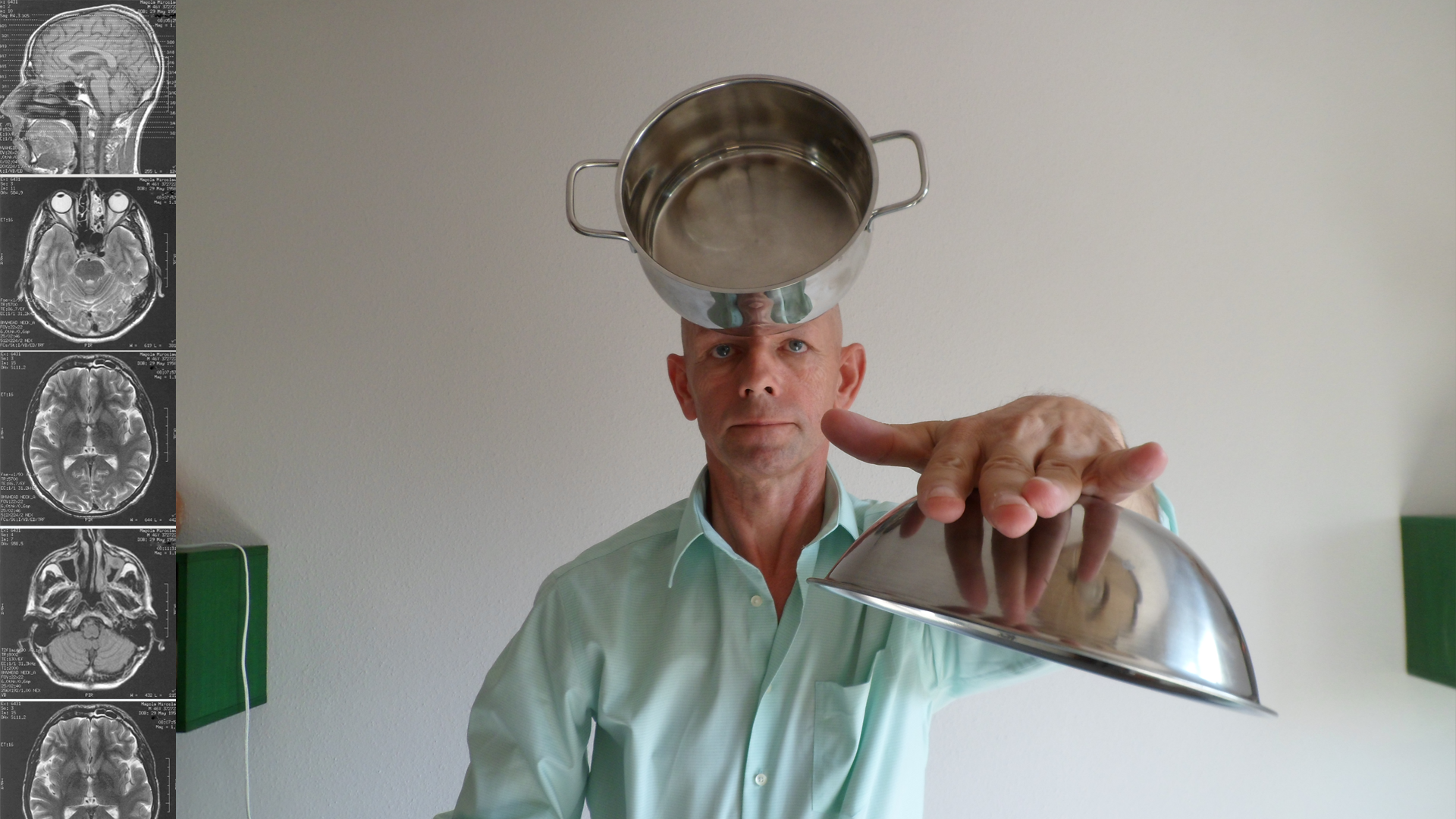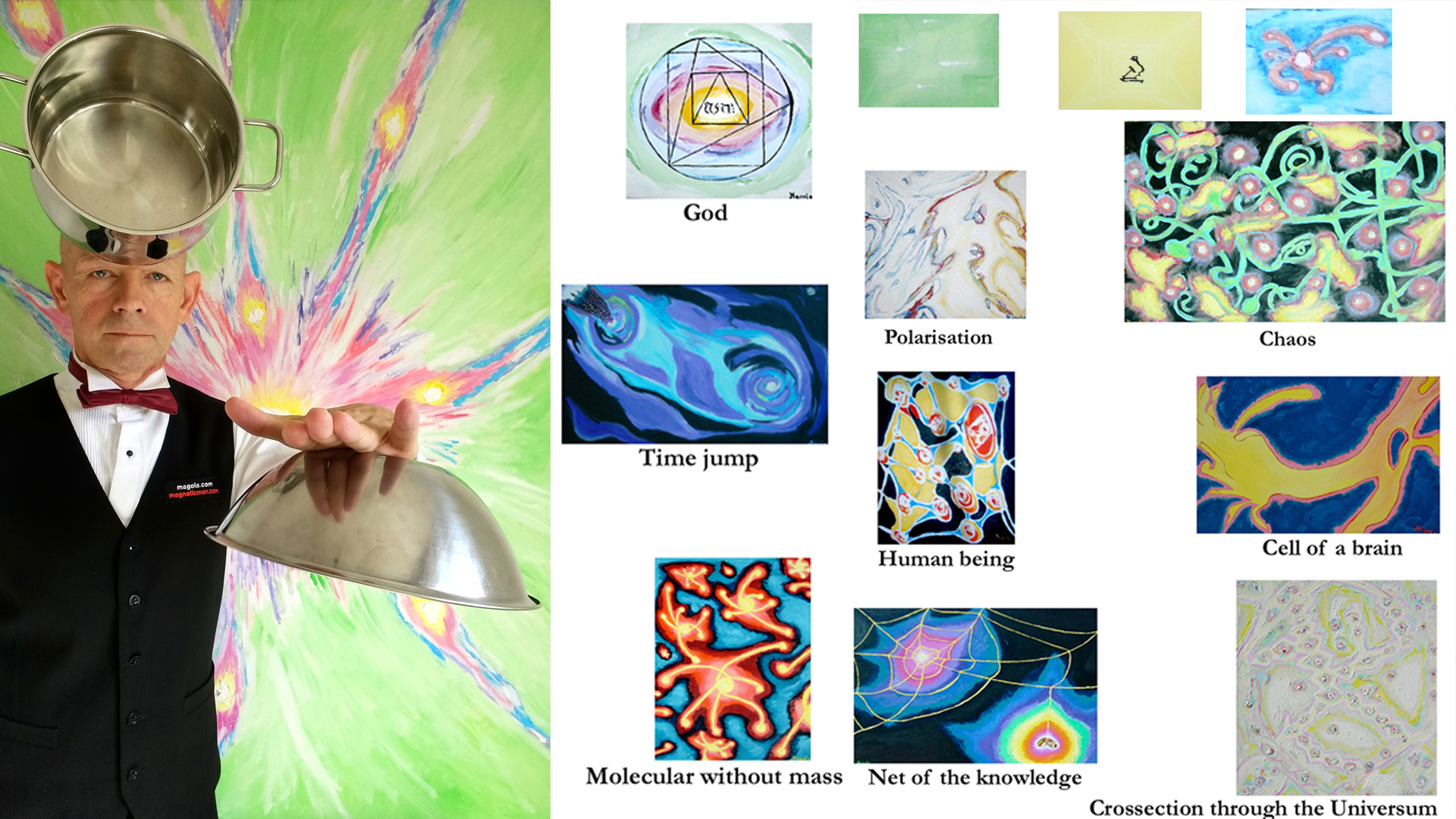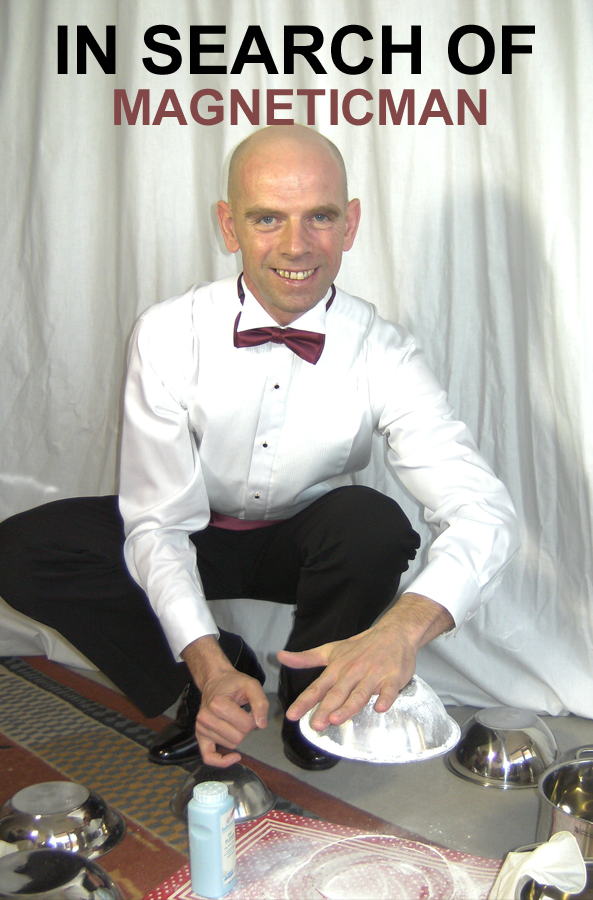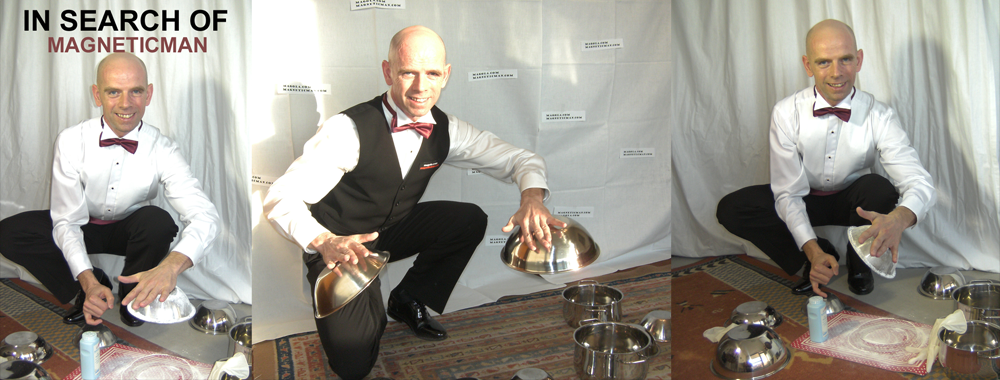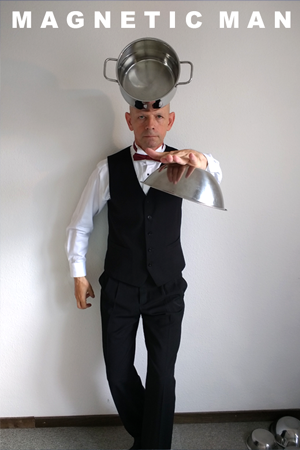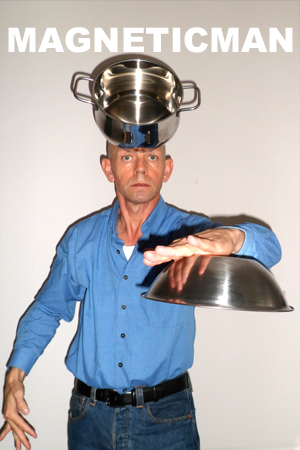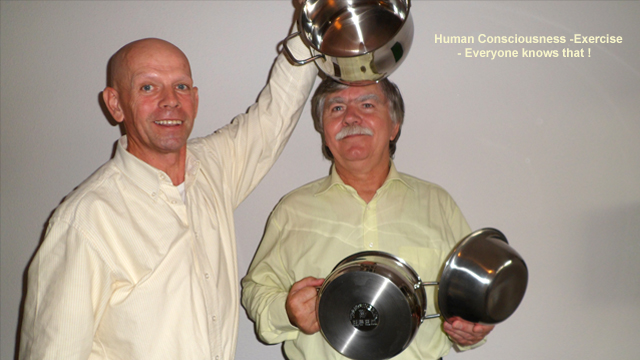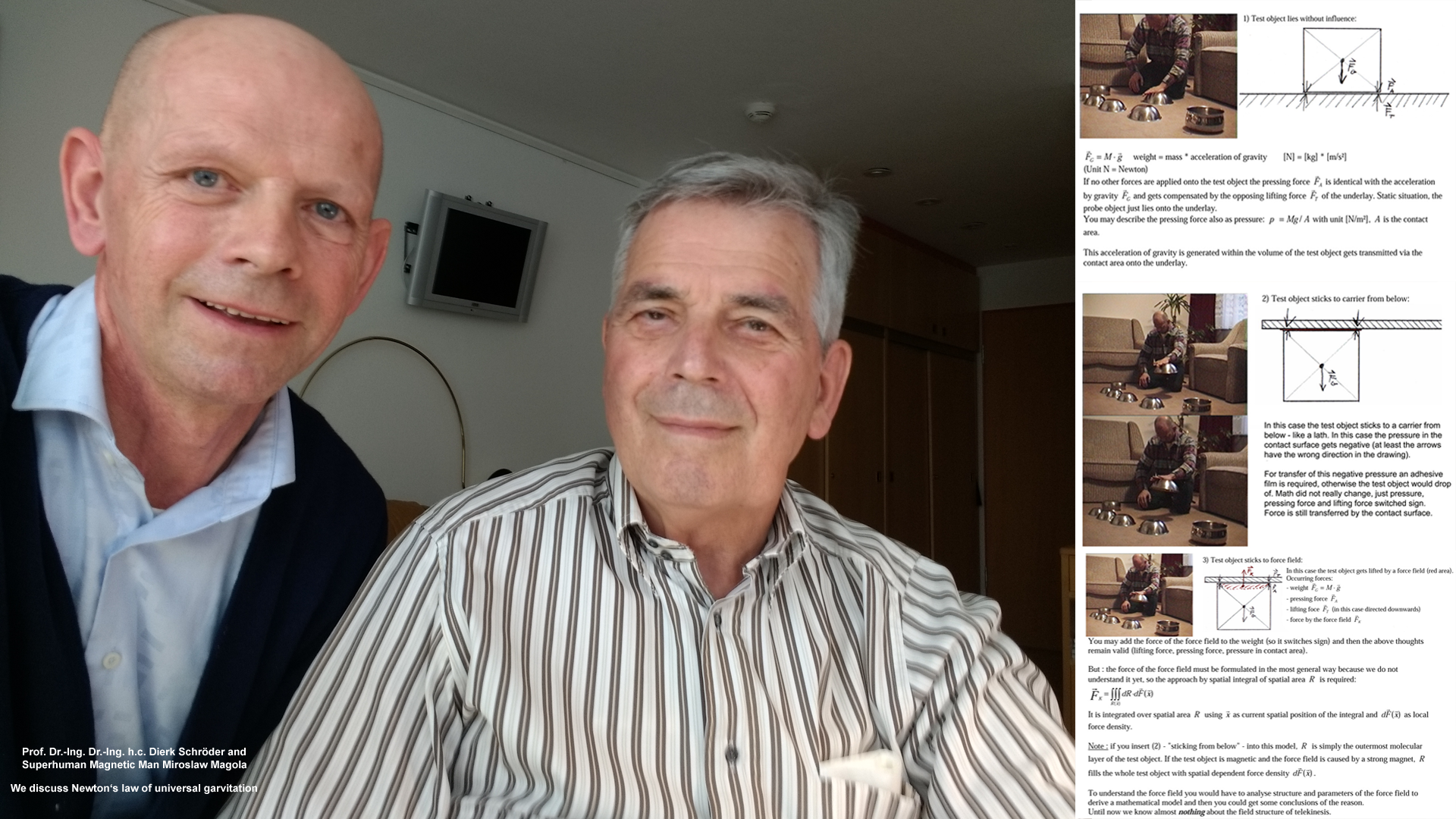
Prof. Dierk Schroeder and Superhuman Magnetic Man Miroslaw Magola discuss Isaac Newton’s universal law of gravitation.
Newton’s law of universal gravitation states that every particle attracts every other particle in the universe with a force which is directly proportional to the product of their masses and inversely proportional to the square of the distance between their centers. This is a general physical law derived from empirical observations by what Isaac Newton called inductive reasoning. It is a part of classical mechanics and was formulated in Newton’s work Philosophiæ Naturalis Principia Mathematica (“the Principia”), first published on 5 July 1687. When Newton presented Book 1 of the unpublished text in April 1686 to the Royal Society, Robert Hooke made a claim that Newton had obtained the inverse square law from him.
In today’s language, the law states that every point mass attracts every other point mass by a force acting along the line intersecting the two points. The force is proportional to the product of the two masses, and inversely proportional to the square of the distance between them.
Newton’s law has since been superseded by Albert Einstein’s theory of general relativity, but it continues to be used as an excellent approximation of the effects of gravity in most applications. Relativity is required only when there is a need for extreme accuracy, or when dealing with very strong gravitational fields, such as those found near extremely massive and dense objects, or at very close distances (such as Mercury’s orbit around the Sun).
From Wikipedia, the free encyclopedia
Prof. Dr.-Ing. Dr.-Ing.h.c. Schroeder spent ten years in various positions at Asea Brown Boveri (ABB), Mannheim, Germany. In 1979 he was named Professor and Chairman of the Institute of Electronics and Power Electronics at the University of Kaiserslautern. In 1983 he was named Professor and Chairman of the Institute of Electrical Drive, Systems at the Technical University of Munich, Germany. During 2006 -2009 retired but still in the old position, Since 2009 writing books and give lectures about Intelligent Strategies.
Industrial career: 1970-1976 Brown Boveri & Cie., Mannheim (now ABB); Research and Development Department, various areas of research and different positions 1976-1979 BBC, Mannheim, Head of the Technical Department of the Industrial Division
Academic career: 1979-1983 (interim until 1985) Technical University of Kaiserslautern, Chair and Director of the Institute for Electronics and Power Electronics 1983 – 2006 Technical University Munich,
Chair and Director of Electrical Drive Systems (Mechatronics)
2006 -2009 retired but still in the old position
2009 – now writing books and lecture Intelligent Strategies
Main areas of education: power electronic components, power electronic circuits, electrical drives, control of electrical drives, mechatronics, nonlinear control, simulation of drives and mechatronic systems, simulation tools
Main areas of research: physical modelling of power electronic components and circuits for CAE, high dynamic control of drives, design and development of a hybrid car [DFG research program 365 “autark hybrid car”, Transferbereich 38, responsible for the modelling of all components, simulation, optimization of the rating of the component, optimization of the driving strategy (of- and on-line), control of the car, electrical drive train]; combustion engine control, HIL- test stand for automotive components; nonlinear control strategies for the identification, modelling and control, web handling (paper, printing, seal, foil)
Honours: Honour PhD given from the Moscow Power Engineering Institute in Moscow, 1993,
Fellow IEEE, 2002
Editorial activities: Four books “Electrical Drives 1 – 4″, Springer
Fundamentals 1994 and 2002 (640 pages), 2007 ( 736 pages ), 2009 ( 742 pages )
Control 1995, 2001 (1240 pages) and 2006, 2008 ( 1336 pages, new edition 2012
Power Electronic Components 1996 and 2005 (1001 pages)
Power Electronic Circuits 1998 und 2006 , 2012 new edition
Gear Motor Handbook, Springer; Intelligent Identification and Control for Nonlinear Systems, Springer 2000
Intelligente Verfahren – Identifikation und Regelung nichtlinearer Systeme, Springer Verlag . 2009 (840 pages )
Currently more than 370 publications on conferences and technical papers.
Stephen Hawking predicted a race of superhumans will take over the world.
Physicist Michio Kaku on exploring the universe via avatars, in Mysteries of the Mind and What about telekinesis? said: Stan Lee a comic-book creator who co-launched superheroes like the Fantastic Four, Spider-Man, Doctor Strange and the X-Men for Marvel Comics
Prof. dr. Dierk Schroeder wrote in his book ” Intelligent Identification and Control for Nonlinear Systems ” that:





